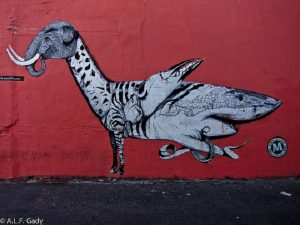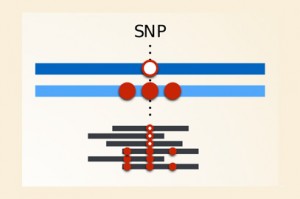Enter your address to receive notifications about new posts to your email.
Articles tagged Bioinformatics
(23 results)
-
Mixed up: Insights into artificial sequencing chimeras
Sequencing a genome is not as simple as reading a book. All those neatly lined up letters are the final product of a complex process made up of many intricate steps that can—and do—go wrong. In a report published in G3: Genes|Genomes|Genetics, Peccoud et al. put their painful sequencing experiences to good use providing new insights into…
-
Inside the genome of a deadly desert disease
Rhinocladiella mackenziei is a fungus that infects the human brain. It is the most common cause of neurological fungal infections in arid regions of the Middle East, and it is fatal in 70% of cases. However, little is understood about this lethal pathogen—not even its natural habitat. To learn more about the biology of R.…
-
The fox and the cranium
Although foxes look cuddly, these wild animals are equipped with sharp bites—and temperaments to match. Fear not, however, if you’re dying to get close to theses fluffy foxes: a nearly 60-year-old experiment has produced a line of them that are friendly enough to pet. The process of creating these tame foxes mirrors the way…
-
Get outbred: Genetic diversity in laboratory gerbils
Biologists rely on animal models to answer important questions that can’t be addressed with cells in a dish. Often, these animals are deliberately inbred; a less diverse population of animals means that data obtained from experiments with these animals will be less noisy and easier to interpret, so fewer animals are needed for meaningful results.…
-
Publish your software and data resources in G3!
Geneticists increasingly depend on highly specialized software and databases. Although it is vital to the field that these resources be well documented and their benefits widely disseminated, reports of new software and databases don’t always fit the mold of a typical research paper. The structure of a conventional research article forces authors to present their…
-
MPP People: Andrew Morgan
Multiparental populations (MPPs) have brought a new era in mapping complex traits, as well as new analytical challenges. To face these challenges and encourage innovation, the GSA journals launched the ongoing Multiparental Populations series in 2014. This month’s issues of GENETICS and G3 feature a bumper 16 MPP articles, timed to celebrate a new easy-to-use…
-
Snorkeling out of the membrane
One of the last places you’d expect to find a charged amino acid residue is buried within the hydrophobic interior of a lipid bilayer. And for the most part, this expectation holds true: portions of proteins that span membranes are typically composed of hydrophobic residues. But in some cases, the positively charged residues lysine and…
-
The fungus-fighting secrets hiding in the sugar pine’s enormous megagenome
Towering sugar pine trees dominate the mountain forests of California and Oregon. They are the tallest pine trees in the world, regularly growing to skyscraper heights of over 100 meters. But these forest behemoths are under attack from a very tiny foe: an invasive fungus. White pine blister rust was accidentally introduced to western North…
-
First TAGC registrant – Kathleen Triman
Emerita member Kathleen Triman was the first person to register for The Allied Genetics Conference (TAGC). Here she tells us why she can’t wait. Kathleen L. Triman, PhD Professor Emerita Department of Biology Franklin & Marshall College Lancaster, PA 17603 Why are you excited to participate in TAGC? Genetics is my lifelong fascination! TAGC…
-
NIH seeking new director for National Library of Medicine
The National Institutes of Health (NIH) is seeking applications from exceptional candidates to be the next director of NIH’s National Library of Medicine (NLM). NLM is the world’s largest biomedical library that maintains and makes available a broad range of print and electronic resources. Current NLM databases include GenBank, PubMed, and ClinicalTrials.gov. Following from the…
-
The trouble with HLA diversity
The most diverse of all human genes encode a set of proteins at the frontline of our immune system. Many different Human Leukocyte Antigen (HLA) proteins are encoded by genes clumped together in one portion of the human genome known as the major histocompatibility complex region. HLA proteins sit on the surface of cells and…








![By National Park Service [Public domain], via Wikimedia Commons.](https://s43361.pcdn.co/wp-content/uploads/2017/03/biscayne_np_snorkeling-1-300x214.jpg)



